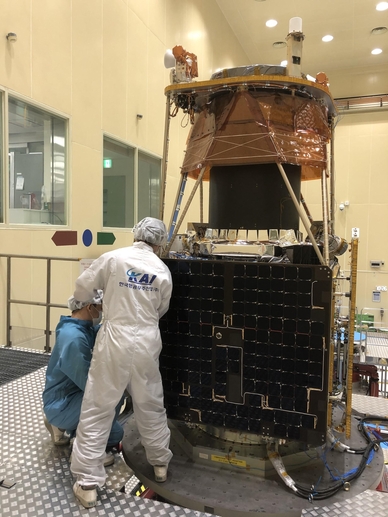Input 2021.03.23 09:05
According to the KAI on the 23rd, the next-generation medium-sized satellite 1 plans to provide full-fledged standard video from October after an initial operation process such as communication inspection for about 6 months at an altitude of 497.8km orbit. It precisely observes the earth with a resolution of 0.5m in black and white and 2m in color, and is used for land and resource management and disaster/disaster response.

KAI supervises the development of vehicle 2 by applying the technology transferred from Hang Woo-yeon. From satellite system design to body development, manufacturing, assembly, testing and launch, it is developing, and is expected to launch in January next year. KAI explained that it is meaningful in that it is the first step of the private-led New Space for the first time in the domestic space industry.
The standard platform has the advantage of being able to freely mount various payloads such as optics, radar, infrared, and ultra spectrometers on the same satellite body. In addition, cost reduction is possible because test ground equipment and satellite connection signal equipment can be reused.
The next-generation medium-sized satellite phase 2 project is a project to localize and develop 3 vehicles for space science research, agricultural forestry, and water resource monitoring, using the 500 kg standard platform established as a phase 1 project. The next-generation medium-sized satellite 3 is mounted on a Korean launch vehicle to verify the launch function of the launch vehicle and is used for space science research.
The next-generation medium-sized satellite 4 will be used for periodic crop monitoring and agricultural and food security purposes, and the vehicle 5 will be used for forest monitoring, water resource management, and post-mortem response. Next-generation medium-sized satellites 3 and 4 will be launched in 2023, and the 5 will be launched in 2025.

KAI aims to build an independent value chain to lead New Space starting with the vehicle development business. It plans to strengthen cooperation with research institutes that have core source technologies, establish alliances with related companies with source technology for payloads, and establish strategic partnerships with service companies that process satellite observation data.
A KAI official said, “We are consolidating related capabilities to grow into a comprehensive solution provider including space business expansion, such as satellite manufacturing, entry into the ground station field, and satellite utilization services,” said “When the value chain promoted by KAII is established, the domestic market will Of course, price competitiveness will be secured in overseas markets,” he said.
In addition, KAI is promoting export package deals including commercial satellites when exporting domestic aircraft. In many cases, the export markets of aircraft and satellites are the same, and it is expected that tangible results are expected within the year from export consultations, which are currently being discussed.
A KAI official said, “It is a great advantage of KAI to simultaneously promote the aviation and space business,” and, “With the price competitiveness secured through the establishment of KAI’s own value chain, the export of satellites will surely succeed.” For the purpose of controlling it on the ground and processing the secured image data, if the satellite value chain is established, it is expected to create a synergy effect with the unmanned aerial vehicle.”
